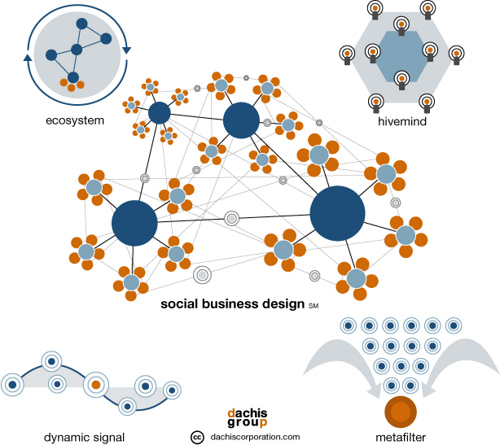During the last two days I have spent the better part of my nights listening in to and participating in the discussion at the Enterprise 2.0 conference in San Francisco. This wasn’t only Twitter, quite some documenting took place in Google Wave too (that’s global collaboration, me and Dan editing the same blip while being literally thousands of miles away from each other, for #nirvana we only need to sort out the time zone problems). Some notes and thoughts are still forming and may end up in a frogpond- or enterprise2open-blog post soon …
Until then this video is a good thing to watch, Oliver Marks (who happens also to be one of the headliners at next week’s E20SUMMIT) talking with Andrew McAfee (new book here: Enterprise 2.0: New Collaborative Tools for Your Organization’s Toughest Challenges) about the conference, it’s target audience and about the current state of the discussion around Enterprise 2.0.
We discuss the strengths of the event – the evangelists and middle ranking employee success stories – but also note the need for impressing on senior ‘C’ suite decision makers in organizations the business value of these modern ideas and associated technologies.
There are at least two interesting things to notice in there, one: the discussion is evolving quickly and the experts have since long stopped to mull over questions of definition, why even of questioning RoI. The real topics are now the necessary steps we all should take to get the C-Suite from “being interested” to becoming active sponsors – and how to explain the tangible benefits of collaborative performance. Systems are ready and able, experienced consultants ditto and may work for the satisfaction of being the change you want to see money. Gentlemen, please let your projects start.
The other thing is the obervation I absolutely second that middle-level people aren’t the roadblock, in fact they are the necessary ingredient of Enterprise 2.0 success and make out most of the participants both at the Enterprise 2.0 conference and the upcoming E20SUMMIT. This isn’t by chance or “because they were told to go” but because they feel the need and the willingness to change with and by Enterprise 2.0.
 Dem Thema Enterprise 2.0 tut etwas Realismus gut, insofern freue ich mich auch darauf dass wir in drei Wochen mit dem
Dem Thema Enterprise 2.0 tut etwas Realismus gut, insofern freue ich mich auch darauf dass wir in drei Wochen mit dem 